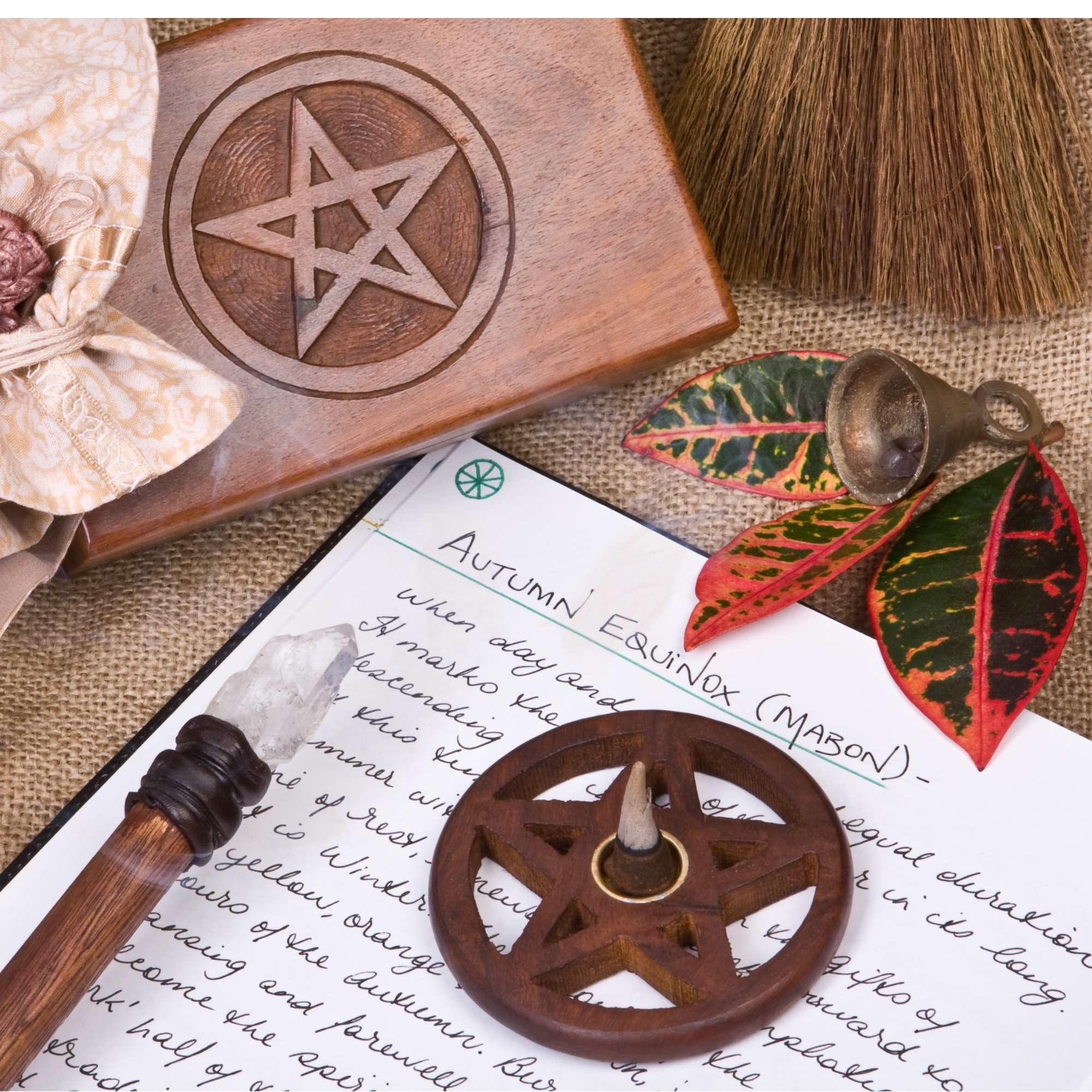
Celebrating Mabon: The Mystical Autumn Equinox
In the heart of the Wiccan calendar lies Mabon, a lesser-known but deeply significant Sabbat that marks the Autumn Equinox. As the wheel of the year turns, Mabon invites us to celebrate the second harvest and delve into the mysteries of balance and equality.
Understanding the Autumn Equinox
Mabon, also known as the Autumn Equinox, typically falls around September 23rd. It is a time when day and night stand in perfect balance, with the sun beginning to wane as the days grow shorter. This lesser Wiccan Sabbat is also known by other names such as the Second Harvest Festival, Wine Harvest, Feast of Avalon, and Alban Elfed.
The symbolism of Mabon Sabbat is associated with the themes of balance, reflection, and gratitude. It marks the midpoint of the Fall season, as it honors the balance between light and darkness, day and night, summer and winter. It is a time to reflect on the abundance of nature that has been provided in both practical and spiritual terms. This sabbat is also known for its focus on gratitude and expressing thanks for all that has been received throughout the year, including blessings from Gods or Goddesses. In addition to this, Mabon Sabbat often includes preparations for winter ahead: stocking up pantries with food, harvesting herbs for teas and incense, gathering firewood for warmth etc.
Deities of Mabon
Mabon is associated with various deities, particularly those connected with wine, such as Dionysus and Bacchus, and those representing aging and the passage of time. The Goddess in her aspect of the Mother, exemplified by Demeter, is also revered, along with Persephone, Dionysus, Thor, Freya, and Cerridwen.
Rituals and Celebrations
The Autumn Equinox is a time for thanksgiving and gathering of the harvest. Rituals may involve giving offerings to deities, making corn dollies, baking bread, honoring ancestors, divination, or spending time in nature. Harvest festivals are popular celebrations during Mabon season. This is also a perfect time to meditate, contemplate on the changing of the year, and plan for what comes next. Mabon is a time of balance - a moment between two halves - which can be used to reflect upon all that has been and all that is yet to come. It is a time to recognize and be grateful for one’s blessings, as well as an opportunity to cultivate love and understanding.
Mabon and Modron: A Tale of Light and Change
The legend of Mabon and Modron is deeply intertwined with the celebration of the Autumn Equinox. Mabon, the "Great Son of the Great Mother," symbolizes the Divine Youth or the Child of Light. His birth marks a significant shift in time, paralleling the transformative energy of the equinox.
Upon the arrival of Mabon, the Sun's strength diminishes until the Winter Solstice, mirroring Mabon's journey as he is stolen from his mother at birth. His time in the womb of his mother Modron, the Great Goddess, is a time of growth and renewal, culminating in his rebirth as the Son of Light at Yule.
Persephone and the Underworld: The Cycle of Seasons
The story of Demeter, Persephone, and Hades offers another mythological perspective on the Autumn Equinox. According to Greek myth, Autumn begins when Persephone returns to the Underworld to live with her husband, Hades. This cycle of departure and return mirrors the changing seasons, with Spring erupting in joy at Persephone's return to her mother Demeter, and Fall descending in sorrow as she leaves for the Underworld.
Mabon Traditions and Practices
Mabon is a time of giving thanks for the harvested crops and honoring the aging Deities and the Spirit World. Traditional practices include making wine, adorning graves, and collecting seeds and dried plants for future herbal magic. It is also a time of relaxation and reflection, a pause to appreciate the fruits of our labor.
Spellwork at Mabon often focuses on protection, wealth, and self-confidence, as well as restoring balance and harmony. Ritual actions might include praising fruit as a testament to the Goddess and God's love, and a ritual sprinkling of Autumn leaves.
Honoring Mabon with Colors, Stones, and Foods
The vibrant hues of Autumn - red, orange, deep gold, brown, russet, maroon, and violet - are the colors of Mabon. Candles of orange, dark red, yellow, indigo, or brown may light the altar. Stones such as amethyst, yellow topaz, carnelian, lapis lazuli, sapphire, and yellow agate are often used during Mabon rituals.
The foods of Mabon reflect the bounty of the second harvest: grains, fruits, vegetables, wine, breads, roots, nuts, and apples. Traditional fare like cornbread and cider, beans, and baked squash are often served.
Mabon is a celebration of balance, harvest, and gratitude. As we honor this time of change and balance, may the Lord and Lady bless us all with prosperity and a plentiful second harvest. Let us use this time to reflect, give thanks, and prepare for the darker half of the year. Mabon is more than a celebration; it is a reminder of the cyclical nature of life and the beauty that comes with each turn of the Wheel of the Year.


Kommentare (0)
Zurück zu Morgana's Musings